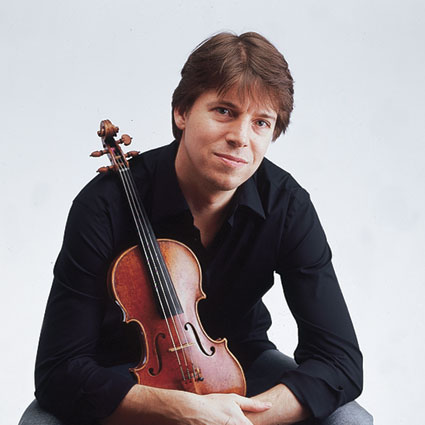Joshua Bell brings lyricism and bravura to Romantic program at the Arsht Center

Joshua Bell performed works of Schubert, Brahms, and Grieg Tuesday night at the Arsht Center.
Attesting to his continuing popularity as violin virtuoso and media celebrity, Joshua Bell drew a large and enthusiastic audience to the Arsht Center Tuesday night for a program that concentrated on rarely played scores from the nineteenth-century romantic repertoire. British pianist Sam Haywood was his collaborator on this occasion rather than Bell’s usual recital partner Jeremy Denk.
Haywood was clearly feeling his way in a musical relationship that is still a work in progress. In Brahms’ Sonata No. 2 in A Major, the evening’s most familiar score, Haywood was overpowering at times and not always fully in sync with his violinist colleague. For his part, Bell was initially so low-key and restrained that the first movement emerged rather bland and under nourished. Yet in the lovely Andantino, Bell’s unusually light, singing approach glowed in an almost operatic manner. The violinist unfurled his chops in the finale, the sweetness of tone and blazing impetuosity that are his trademarks taking wing.
Schubert’s Fantasy in C Major is one of the composer’s last works. A wild ride that begins with a solemn, unmoored introduction through a glorious theme and variations to a rousing bravura finale, this is a score that few violinists dare assay and for good reason. The work is a treacherous minefield of technical challenges, sometimes presaging Paganini in rapid-fire passagework in the instrument’s highest register. Chopin-esque figurations, both stormy and delicate, abound in the piano score, far from mere accompaniment.
Bell and Haywood were equal to the challenge. The pianist seemed more settled and comfortable, producing sensitive, pearly tone as well as bursts of surging power without ever overwhelming Bell. In the central Andantino and variations, Bell’s shining line and exquisitely molded phrasing were spaciously etched, the wild leaps played with flawless intonation, even at the instrument’s extremes. Bell turned up the heat in the Allegro vivace finale, hurling through the double stops with sovereign authority. For all the instrumental brilliance on display, Bell and Haywood did not neglect the score’s tragic subtext. Undertones of autumnal sadness leavened the storming pyrotechnics.
Bell has recently taken up the cause of Edvard Grieg’s violin works. He certainly played the composer’s Sonata No. 2 in G Major for all it was worth, offering a stunning performance, rich in burnished tone and intensity firing on all cylinders. The score, however is one of the composer’s lesser works, hardly the equal of the more familiar Sonata No. 3, which Bell and Denk performed at the Broward Center last season.
Grieg here recycles thematic threads from his In Autumn overture in the first movement as well as suggesting melodies that would later take fuller form in the Lyric Pieces. The score’s best moments are found in the Andante tranquillo, a skillful synthesis of Brahmsian grandeur and Norwegian nationalism. A finale more scherzo than climactic exclamation is a major weakness, yet Bell firmly projected Grieg’s mix of country fiddling and broad romantic gestures with conviction.
Bell brought honeyed tone to Sibelius’ Romance, a salon piece atypical for this Finnish master, and a dizzying combination of speed and incisive fervor to Wieniawski’s Polonaise Brilliante. A patrician reading of a transcription of a Chopin nocturne concluded the evening on a ruminative note.
Posted in Performances
Leave a Comment
Wed Jan 19, 2011
at 9:51 am
No Comments
